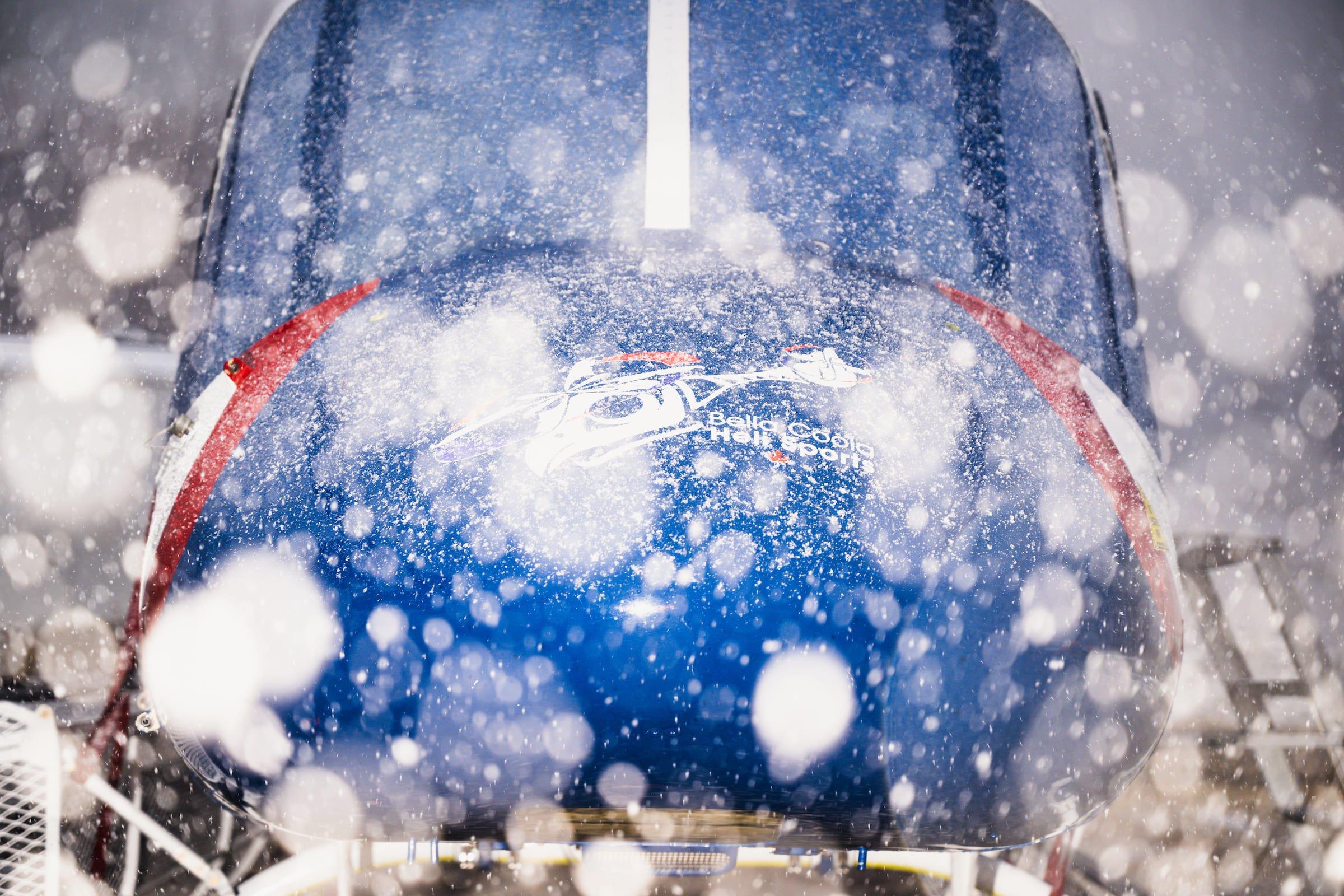
Winter 2026 Snowfall Forecast
What Can Heli Skiers Expect This Winter?
Long-range forecasts are painting an exciting picture for the 2025–26 winter season in British Columbia. A developing La Niña pattern—often linked to colder temperatures and increased mountain snowfall—is taking shape across the Pacific. Early signs suggest a winter that could be deeper, colder, and more consistent than the last.
According to Environment Canada and several leading meteorological agencies, the Pacific storm track is expected to favour the Coast Mountains and the Interior of British Columbia, setting the stage for a strong heli-skiing season from early December through April.
In short: winter looks set to arrive early—and stay deep.
Understanding the 2025–26 Climate Setup
The global climate picture this year is aligned in favour of Western Canada’s snowpack. Alongside La Niña, the Indian Ocean Dipole (IOD) is shifting into a negative phase, marked by cooler waters in the western Indian Ocean and warmer waters near Indonesia. This configuration amplifies La Niña’s effects by strengthening the jet stream and steering more storms toward the Pacific Northwest.
What This Means for Canada
- Low atmospheric pressure over Canada
- A blocking high over Greenland that slows the jet stream
- Persistent cold anomalies across Western Canada
In past negative-IOD years, these dynamics have been linked to above-average snowfall across British Columbia’s mountain ranges—and a colder, longer winter season overall.
While no two winters are identical, the indicators suggest a strong probability of:
- Colder-than-average conditions
- Enhanced natural snowfall
- A prolonged tail to the season if cold lingers into spring
Together, these drivers create ideal conditions for a deep, stable, and long-lasting snowpack—a hallmark of great heli-ski winters.
Coast Range vs Interior: Two Snow Worlds, One Province
British Columbia offers two distinct snow climates that define its heli-skiing experience:
- The Coast Range—a maritime climate that receives 20–25 metres of snow annually, producing a deep, consolidated snowpack ideal for steep alpine terrain.
- The Interior Mountains—a colder, continental climate known for its light, dry powder and reliable mid-winter cold.
Most operators are limited to one or the other. Bella Coola Heli Sports uniquely offers both, across a vast 3.55 million-acre (14,370 km²) tenure—the largest contiguous heli-skiing area on Earth.
Where Each Destination Fits
Eagle Lodge and the MV Cascadia yacht program operate in the heart of the Coast Mountains, where Pacific storms deliver monumental snowfall and expansive alpine terrain.
Tweedsmuir Park Lodge sits where the Coast and Chilcotin Ranges meet—a convergence zone that combines coastal depth with interior dryness for remarkably consistent powder.
Sand Creek Ranch, set on the western edge of the Chilcotin Plateau, benefits from a rare convergence of weather systems. Its proximity to Bute and Knight Inlets — deep coastal fjords that act as natural pipelines for moist Pacific air — allows snow-bearing storms to push far inland. As these systems rise over the highlands, they cool and release frequent, light accumulations of powder. The result is a unique microclimate that combines coastal depth with interior dryness, creating some of the most consistent snowfall in British Columbia.
This geographic diversity allows Bella Coola Heli Sports to adapt to shifting weather patterns and maintain excellent conditions throughout the season—from storm cycles in January and February to bluebird powder in March and April.
Recent Trends: From Last Winter to This One
The 2024–25 winter brought average snowfall to much of Western Canada, with isolated highlights. The coming season looks different. Long-range analogs suggest a pattern similar to some of the most prolific La Niña years on record.
Forecast Highlights
- Early-season snowfall building quickly in November and December
- Above-average accumulations through January and February
- Cooler, more stable snowpack extending into spring
These conditions support the kind of reliable powder that allows guides to open—and safely maintain—big alpine terrain.
Why the Coast Mountains Stand Out in 2026
The Coast Range has always delivered depth and dependability. While interior ranges may get lighter snow, the Coast consistently builds a deeper and more cohesive base, allowing safe access to the kind of steep, high-vertical terrain heli-skiing is known for.
Key Advantages
- Higher storm frequency and stronger refresh cycles
- Greater snowpack stability in varied terrain
- Access to alpine lines even during variable weather
With La Niña and the negative IOD both favouring Western Canada, the Central Coast—home to Bella Coola Heli Sports—sits directly in the path of the most active weather systems.
Positioning the 2026 Season: A Data-Backed Outlook
Forecast models can’t promise perfection, but they do support what decades of guiding experience have shown: the Central Coast microclimate reliably outperforms expectations. Here, maritime storms meet interior cold, creating a balance of quantity and quality that few mountain regions can match.
What to Expect
- Frequent storm cycles
- Deep, stable snowpack formation
- Extended powder skiing into late spring
For heli-skiers, that means more consistent conditions, more terrain options, and a season that could stretch longer than usual.
Subscribe & Elevate your inbox
Knowledge is pow(d)er.